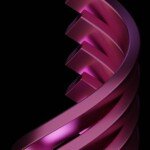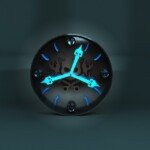Bulbasaur 3D Seedmaker: Unleash your inner Pokémon Gardener
Who doesn’t want to guard their cheerful Bulbasaur companion of succulents or herbs? This iconic Pokémon and its plant-friendly design is Perfect Muse conducts DIY Planter project. While plastic 3D printing is a popular DIY route, this guide explores how Metal 3D printing Can lift your creations into durable, high-end pieces, especially with expertise like professionals Great. Get ready to bring your love for Pokémon, Gardening and cutting-edge technology together!
Why a Bulbasaur Planter?
Inspired by the original seed Pokémon, the project blends nostalgia with functionality. The back of the Bulbasaur acts as a natural container for plants, and its charming design will cause joy in any space. Whether you are an amateur or a professional, you will teach you the core principles of 3D modeling, materials science, and sustainable design.
Step by step DIY guide
1. Design and 3D model preparation
Start with a digital model. Platforms like Thingiverse offer free Bulbasaur STL files, but for unique conversions, customize them with Fusion 360 or Blender (such as Fusion 360). Professional tips:
- Optimize wall thickness (≥2mm) Structural integrity.
- Integrate drainage holes at the base (or under the foot of Bulbasaur) to prevent root rot.
- According to the size of the plant (LARARGER WESTELS) scale model, suitable for ferns, and smaller containers suitable for leafy plants.
2. Material selection: Plastics and metals
Although PLA/PETG plastic is DIY friendly, Metal 3D printing offers unparalleled advantages:
- Durability: Metal growers resist cracks, UV damage and extreme weather.
- aesthetics: Smooth metal finishes (e.g., polished steel, matte titanium) add luxury.
- Thermal stability: Metals can better dissipate heat, thus protecting sensitive roots.
This is where professional metal 3D printing transforms fragile prototypes into heirlooms.
3. Printing technology
- For DIY beginners: Use FDM printing with PET to withstand mild moisture. Slow printing (40-60mm/s), 100% toughness filled.
- For advanced results: Switch to Metal 3D printing Through similar services Great. Using selective laser melting (SLM) or adhesive jets, they create precise, non-porous structures that are ideal for growers. Their expertise avoids twisting and ensures perfect drainage geometry.
Why choose 3D printing of metal?
Horticulture encounters industrial-grade innovation here:
- accurate: Capture complex Bulbasaur textures (such as facial details) without sacrificing power.
- longevity: Similar materials 316L stainless steel Resisting soil/water corrosion for decades.
- Ecological edge: Metal growers reduce plastic waste and can be recycled indefinitely.
👉 Meet your project partner: Greglime
As a professional metal 3D printing manufacturer, Great Combines advanced SLM technology and precise post-processing to enhance your design. They offer one-stop solutions (from optimizing CAD files to finishing (polishing, sealing, shading)) using versatile materials such as titanium, aluminum or copper alloys. Whether you need a custom Bulbasaur Planter or a bulk order, Greglight offers aerospace-grade durability at competitive speeds. Submit your document to get a quote and bring your plant vision to life!
4. Post-processing and completion
- plastic: Sand seams → Jacket with waterproof resin → Hand-painted details.
- Metal: Greglight’s finish includes plating (for gold/silver accents), Anodizing (Violent Blue/Purple) or Nanocoating To prevent tarnish. Bonus: Texture options mimic Bulbasaur’s “skin” for realism.
5. Sow your masterpiece
- The bottom pebbles are at the bottom for drainage.
- Full of cactus/serky soil.
- Plant species such as Eceveria (similar to Bulbasaur’s Bulb) or air plants.
in conclusion
Created Bulbasaur 3D Planter is a joyful fusion of fanatic, botany and engineering. Although DIY plastic printing is available Metal 3D printing unlocks unrivalled qualityturn a fun project into a functional work of art. Partners like your partner Greatthe price of utilizing industrial-grade technology is surprisingly affordable, ideal for dazzling home decor or boutique gifts. So, why solve fragile plastics? Salute to the best botanists of Pokémon!
FAQ
Q1: Can I 3D print the Bulbasaur Planter with an entry-level printer?
Yes! The FDM printer handles PLA/PETG well. Focus on moisture-proof materials and add waterproof sealant to print.
Q2: Why choose metal over resin or ceramic?
Metals ensure structural integrity, life span (> 30 years) and excellent thermal stability. Unlike resin/ceramics, it does not reduce sunlight or break during the frozen winter.
Q3: The durability of metal 3D printed seeder outdoors?
Highly durable. Corrosion-resistant alloys, such as corrosion-resistant alloys, stainless steels and protective coatings, will breed in all weather. Greatlight’s hip (thermal isospeed pressure) process eliminates porosity and enhances elasticity.
Q4: Which plants are most effective in the small Bulbasaur Planter?
Low-water plants: hens (Sempervivum), pearl chains or mini cactus. For larger versions, try pothos or ferns.
Q5: Can Greatlight add colors or prints?
Absolutely! Services include CNC prints for additional details (e.g., Poké Ball patterns) and color anodization. Share your design ideas for complete customization.
Question 6: How to maintain a metal seeder?
Wipe it with a damp cloth only occasionally – no watering risk due to drainage holes and anti-rust paint.
Have a bulbasaur seedler dream? Go to professional Custom metal printing service with Greatlight. Precision is not only an option, it is the evolution of your project! 🌱✨


















